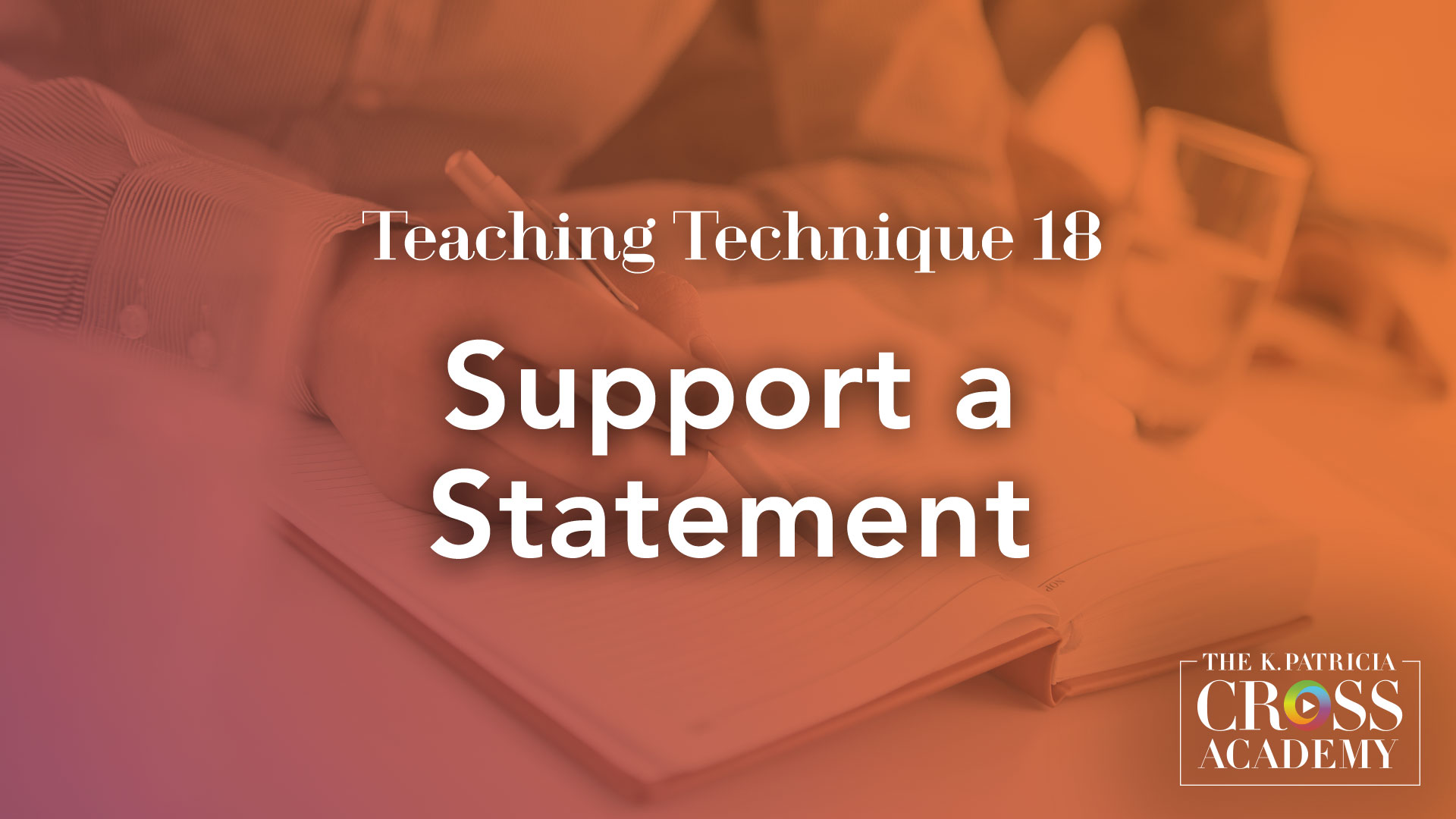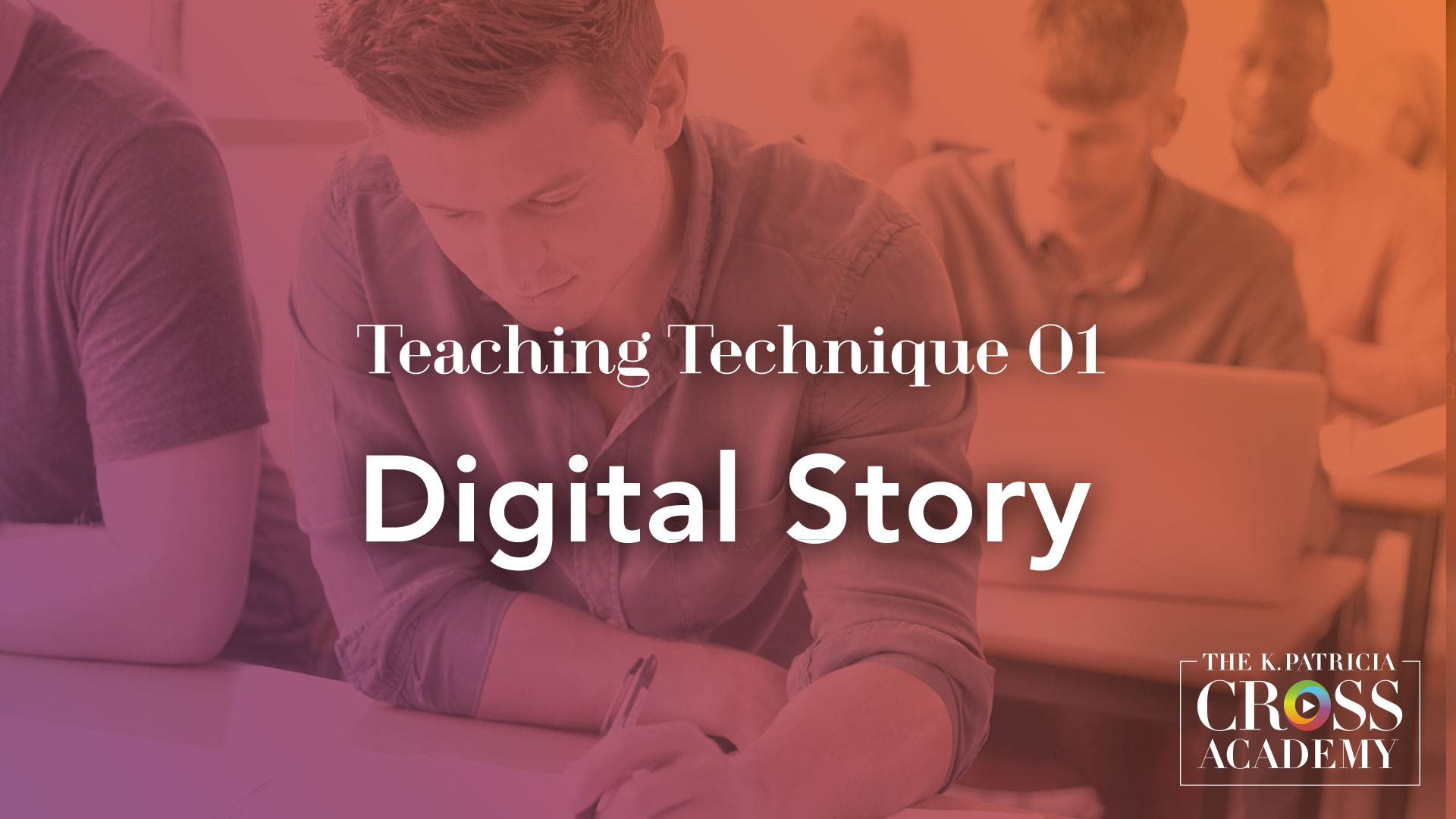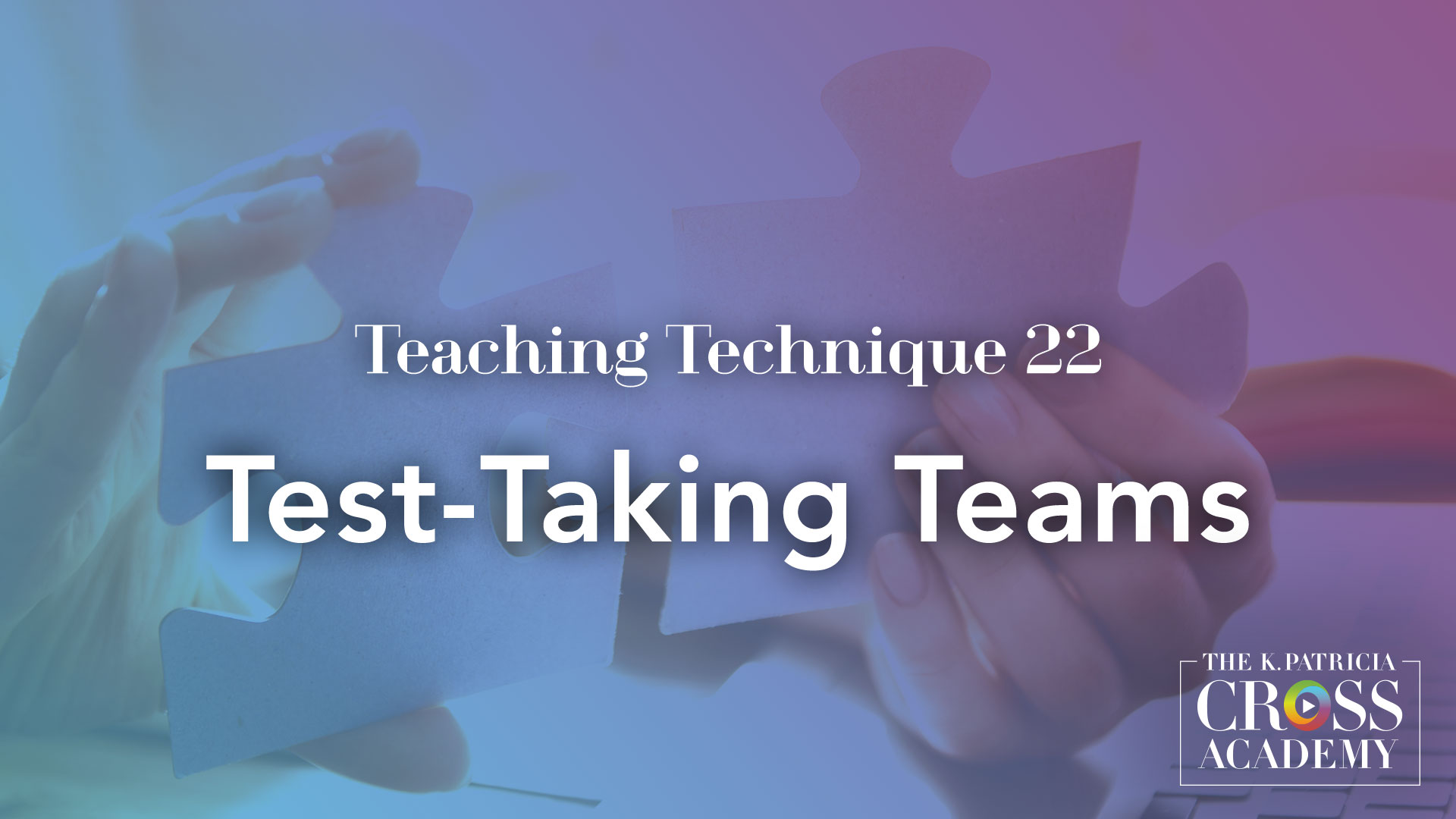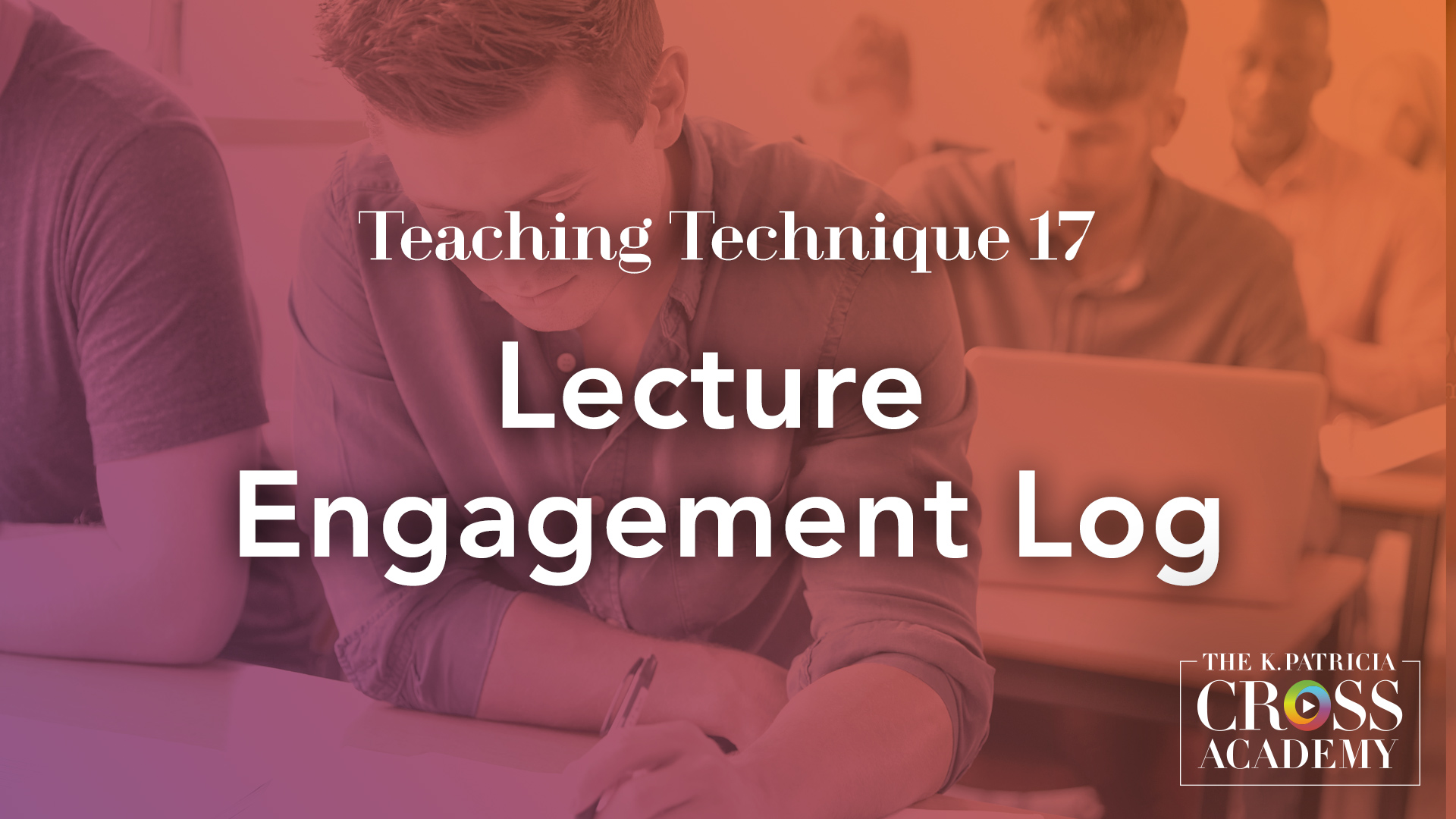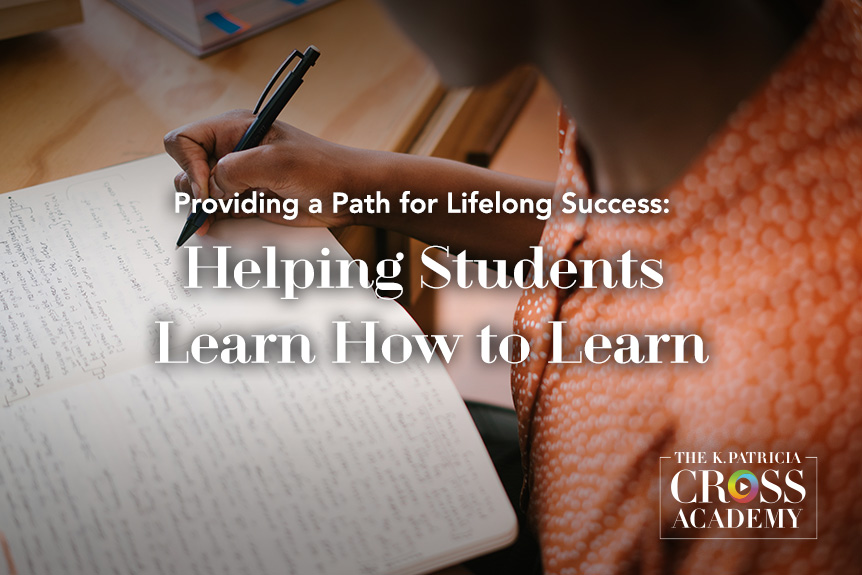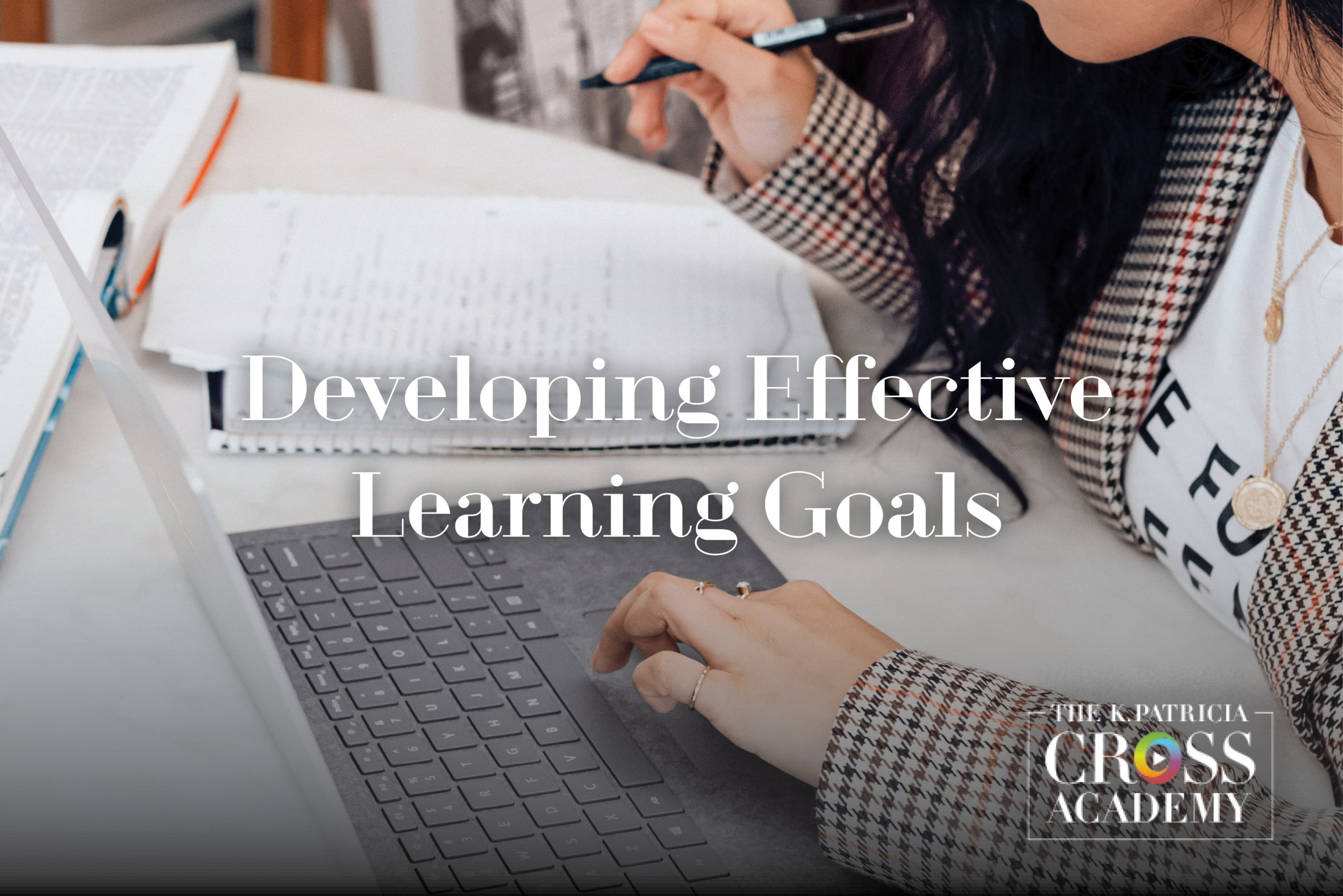
Much of the literature about teaching and learning stresses that teachers should articulate their learning goals as well as their objectives and outcomes. Learning goals allow you and your students to focus on what they are supposed to learn. When learning goals are explicit, they will guide students’ decisions on where to focus effort as well as to illuminate what they are to take from a given task. It will also ensure you are evaluating the things you care most about and designing your course or activity to best meet your goals for students. Indeed, articulating the learning goals for your course is essential for designing, delivering, and assessing it.
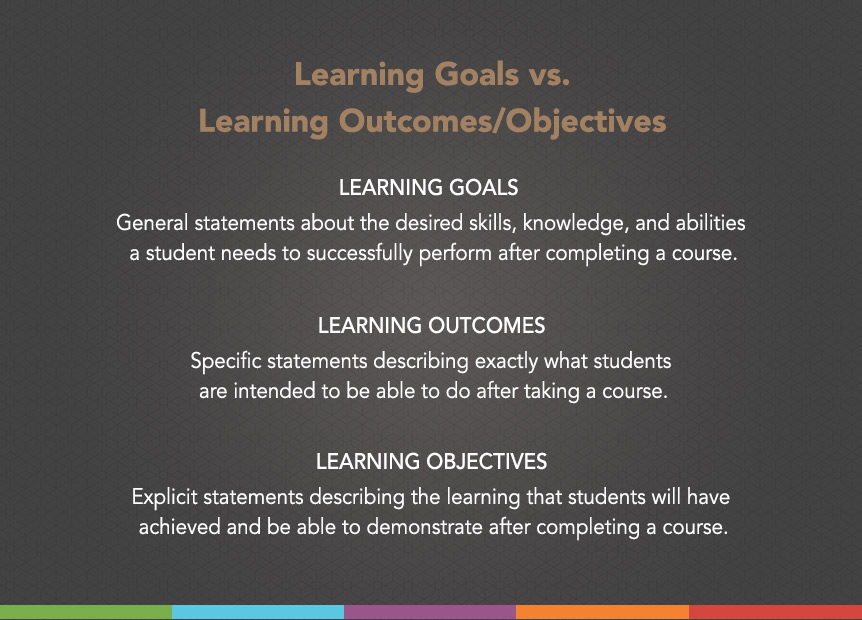
To be clear what we mean by learning goals, which are sometimes confused or conflated with learning objectives or learning outcomes, we offer the following commonly used definitions of these terms followed by examples:
Learning Goals: General statements about the desired skills, knowledge, and abilities a student needs to successfully perform after completing a course.
- Example: Students will develop knowledge of key international relations terms and concepts.
Learning Objectives: Specific statements describing exactly what students are intended to be able to do after taking a course.
- Example: Students will be able to demonstrate understanding and appropriate use of key international relations terms and concepts.
Learning Outcomes: Explicit statements describing the learning that students will have achieved and be able to demonstrate after completing a course.
- Example: In the written essay of their term project, a successful student will synthesize and apply key international relations terms and concepts appropriately with supporting citations and evidence.
Many colleges and universities require instructors to submit formal learning goals alongside course proposals or to include the goals in course listings or in the class syllabus. Such requests can be challenging because the terms themselves may have bureaucratic overtones and, subsequently, teachers may resist the suggestion that they can determine ahead of time what students will take away from their courses. It’s easy to write off the requirement to formalize learning goals as just another attempt to reduce the magic of education and learning to another crude measurement. And so, for many teachers, the idea of defining learning goals can be undesirable and perplexing.
That said, when creating a new course or even adopting standardized curricula, teachers may find it useful to start by outlining what takeaways students should have upon course completion. Beginning with clear learning goals can help teachers establish the basis of their courses.
To aid you in the development of your learning goals, regardless of your field or discipline, we present the following suggestions.
Use the Learning Goals Inventory (LGI) to Determine Significant Learning Goals
Most faculty have a general sense of what their students should learn from a course. In fact, the description listed in a university course catalogue or class schedule often lists the learning goals in expansive terms, and instructors typically paraphrase the listed description in their class syllabi. This is an example of what a common catalogue description might look like for a“Principles of Cell Biology” course:
An introduction to cellular structure, cellular function, the cell cycle, cell communication and signaling, biological molecules, bioenergetics, the genetics of prokaryotic as well as eukaryotic organisms, and an overview of molecular biology.
The description presents in broad strokes and field-specific terms what students should learn by the end of the course.
The Learning Goals Inventory (LGI) was inspired by the Teaching Goals Inventory (TGI) that was developed by Cross and Angelo in 1993 to help teachers determine what students should learn in their courses. The LGI offers 50 learning goals that could apply to most college level courses, grouped so that they correlate with the Significant Learning Taxonomy. The Learning Goals Inventory may be found online here: www.collegeteachingtechniques.net/learning-assessment-techniques/lgi-survey/
Consider Students’ Learning Goals
It is beneficial for both teachers and students to empower students as partners in their own learning process. Weimer (2002) points to teachers sharing power with students as a necessary change for learning-centered teaching. However, Weimer notes that it won’t necessarily come naturally: “[T]eacher authority is so taken for granted that most of us are no longer aware of the extent to which we direct student learning” (2002, p. 23). Sharing power with students as active participants in their education requires teachers to make a small but decisive shift in focus away from what they are teaching to what and how their students are learning, and considering their students’ learning goals is an essential first step in developing a more learner-centered approach to teaching. In any given course, students’ learning goals likely vary, and many students may struggle to articulate them. To ease the process of helping students identify their individual learning goals, teachers may want to have students complete and self-evaluate the Learning Goals Inventory and possibly discuss their results in groups afterward.
“Teacher authority is so taken for granted that most of us are no longer aware of the extent to which we direct student learning.”
Align Learning Goals and Teaching Techniques
At the K. Patricia Cross Academy, you can search our videos by the learning goal with which we think the technique most aligns. See the following for examples:
Conclusion
Designing learning goals will take time and effort, but given all the competing pressures that faculty face, is it worth it? Honestly, for some, it may not be. But there are many benefits to going through the process. Stating what we hope our students learn in assessment language deepens the shared responsibility for learning between teachers and students because we turn our emphasis from what teachers must teach to what students should be able to do after learning, which benefits students in several ways. Students may have reduced anxiety because they now have clear direction, understand their learning priorities, and sense that assessment will be fair. Students may also develop a better understanding of how your course relates to other courses and to the institution’s broader learning goals, which may motivate them to spend more time and effort learning well, because they can see the broader value of your course.
The time spent designing strong learning goals, objectives, and outcomes is beneficial to teachers, too. Pragmatically, the early time and effort spent designing learning goals saves time and anxiety in the later grading process. Indeed, we can ask students to spend more time on self- or peer-evaluation because students have clarity on class expectations. Also, stating what students should learn in assessment language eases the process of measuring what we must do to more effectively provide evidence of learning to key stakeholders. Once gathered, this data can be used for a variety of purposes ranging from offering student feedback to analyzing for research and publication. But what may be most satisfying is the understanding that participation in an evidence-based cycle of assessment and reflection should lead to improved student learning. We are left with the feeling that we’ve made meaningful contributions to the profession in ways that improve learning for students around the world.
To sign up for our newsletter, where you will receive information about new blog posts, click here:
Reference
Barkley, Elizabeth F. and Major, Claire H. (2016). Learning assessment techniques: A handbook for college faculty. San Francisco, CA: Wiley/Jossey Bass.
Suggested Citation
Barkley, E. F., & Major, C. H. (n.d.). Developing effective learning goals in college classes. CrossCurrents. https://kpcrossacademy.org/developing-effective-learning-goals/

Engaged Teaching
A Handbook for College Faculty
Available now, Engaged Teaching: A Handbook for College Faculty provides college faculty with a dynamic model of what it means to be an engaged teacher and offers practical strategies and techniques for putting the model into practice.

